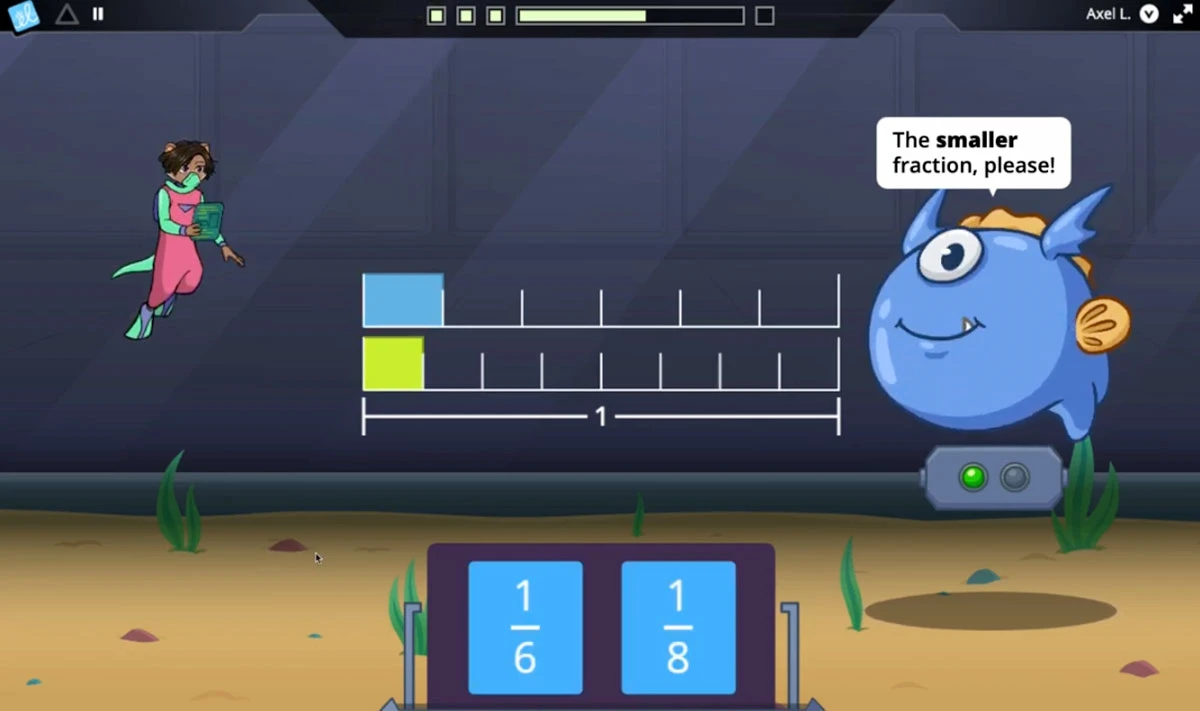Why Strengthening Fractions Instruction Saves Intervention Costs

Stretching school funding and maximizing every instructional minute is today’s new norm. That’s why strong fractions instruction is one of the smartest investments a school can make. When students build confidence with fractions early, teachers spend less time reteaching, resulting in a lower likelihood of intervention programs.
Fraction skills are crucial for reducing math intervention
Strong fraction skills do more than support student confidence. Students with a strong conceptual understanding of fractions will be less likely to require math intervention later on, allowing teachers to spend less time catching up and more time moving the whole class forward in math.
Fractions play a key role in future math success
If you’ve ever watched a student struggle through algebra, you’ve probably seen the impact of shaky fraction understanding. Fractions lay the foundation for abstract thinking required in algebra, one of the strongest predictors of long-term math achievement.
The hidden cost of math intervention
The ripple effect is costly for students who don’t “get” fractions in elementary school. Teachers often spend hours providing extra help, and schools allocate school budget dollars to additional materials, paraprofessional support, or pull-out sessions. Over time, these math intervention costs add up, straining education funding and teacher capacity.
Save intervention costs with strong fractions instruction
Teachers know that intervention is necessary, but it can also be time-consuming and expensive. Every hour spent reteaching students is an hour lost from new learning. Instead of investing limited funding for education in supplemental staff or multiple intervention programs to close fraction gaps, devote time to core fractions instruction before students have a chance to fall behind.
Build fraction skills before students fall behind
Early, targeted fraction instruction prevents small misunderstandings from becoming major learning gaps. Strengthening core fraction skills means fewer students require intensive intervention later, saving both time and money for your school or district.
For critical foundations, students must learn that fractions are numbers, each with a specific magnitude (size) and position on the number line alongside whole numbers and other fractions. Understanding fractions as numbers will empower students for advanced work with fractions, including comparing fractions and converting mixed numbers.
Reduce the need for costly interventions
Preventing skill gaps reduces dependency on intervention groups, specialist pull-out groups, summer programs, and additional staffing, all of which require significant ongoing school funding. Fewer interventions mean school funds can support enrichment, technology, or other strategic initiatives instead.
Save teacher and classroom time
Time is one of the most valuable resources in any school. If a teacher can save 10 minutes a day across the school year, that’s more than 30 hours of instructional time regained per year. At the school or district level, that newfound time can go a long way to impact student learning.
Smart investments should empower teachers to do what they do best while offering support in areas that are not possible in a traditional classroom setting, such as simultaneously providing differentiated feedback to all learners or automating assignment grading.
Frax is a powerful solution to support fraction understanding without disrupting classroom time. Designed for independent, adaptive learning, Frax guides students through fraction concepts in a way that’s engaging, personalized, and grounded in research-based instruction. Frax allows students to work at their own pace, revisit concepts, and receive immediate feedback without slowing down the rest of the class, saving teachers time and energy while ensuring students are learning.

See how Frax usage improves fractions growth
Schools using Frax consistently report meaningful growth in students’ fraction understanding. Data shows that regular Frax usage correlates with improved performance, fewer conceptual gaps, and better readiness for higher-level math—all of which reduce the long-term need for math intervention and stretch limited school budgets further.
A recent longitudinal study demonstrated that incorporating Frax early and consistently in classrooms led to lasting fractions proficiency for students and solid foundations for advanced math. Students who used Frax in Year 1 demonstrated statistically significant improvements in math achievement, even among the most academically at-risk learners, with gains continuing into Year 2. In Year 3, students who used Frax in 3rd and 4th grade carried those benefits forward, outperforming peers in fractions and overall math achievement into 5th and 6th grade.
Teachers who introduce Frax before their fractions unit provide their students with a shared classroom understanding of concepts, increasing achievement, unlocking more creative instruction, and reducing the need for future reteaching.
Experience how Frax supports student growth
Frax strengthens foundational fraction skills, reduces future intervention needs, and helps you make the most of your education funding. When students learn fractions the right way the first time, everyone benefits—your teachers, schools, and most importantly, students.